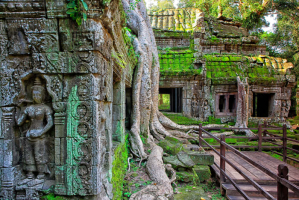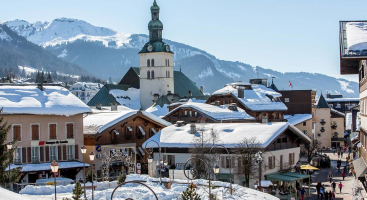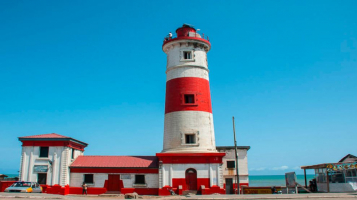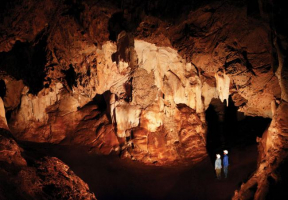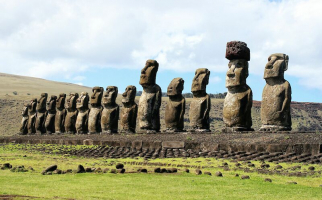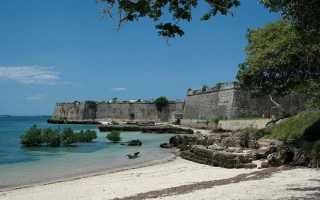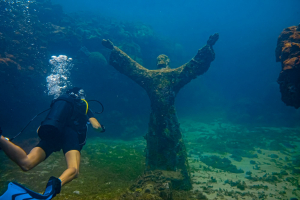Top 15 Most Prominent Archaeological Sites in Europe
With a past as colorful as Europe's, it's hard to avoid learning about the past when traveling, especially when it seems like every other bar or cathedral is ... read more...older than certain nations. Aside from visiting museums, examining archaeological sites is one of the finest methods to learn about a place's history and culture. And here are the most prominent archaeological sites in Europe.
-
Some of the best-preserved ancient structures in northern Italy may be found at the Brescia archaeological complex, which also includes the Republican Sanctuary and the Roman Theatre. Vespasian, the Roman emperor and founder of the Flavian dynasty, constructed the main temple, the remnants of which may still be studied today. The temple, which was prominently located in ancient Brescia (formerly Brexia), suffered devastation in 462 AD when Brescia, along with Verona, Bergamo, and Vicenza, was destroyed by Attila the Hun and was later buried by a landslide. The temple wasn't found again until an excavation in 1826. The main façade, courtyard, and columns are still visible in part today.
The oldest building in the compound, a beautifully maintained Republican sanctuary, is located underneath the temple. It was constructed in the first century BC, and the Capitolium Temple was built on top of it in 73 AD, burying it. It was extremely well maintained over the ages because it was buried for such a long time. Despite excavation and restoration, the shrine still preserves its original mosaic floor and paintings on the walls, which is amazing considering how long ago it was constructed. The Roman Theatre, which is located east of the Capitolium building, is the final building you can see. The theater, one of northern Italy's biggest, had a maximum seating capacity of 15,000 people. It was severely damaged in an earthquake but has since been restored and is lovely to explore and visit.
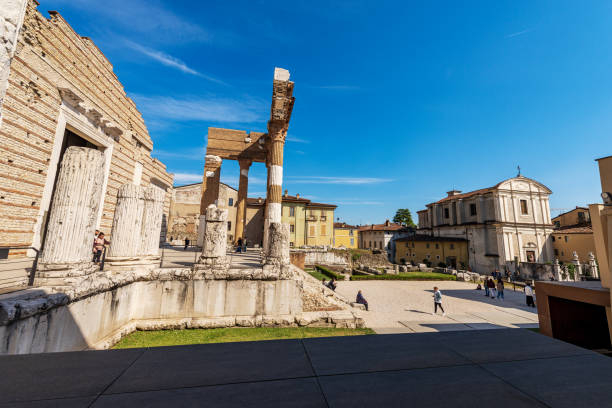
Capitolium & Roman Forum in Brescia, Italy 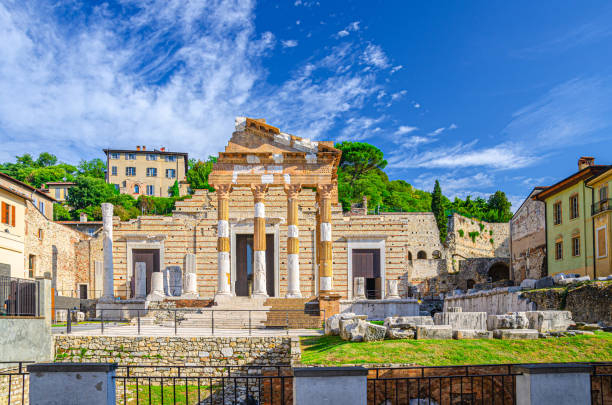
Capitolium & Roman Forum in Brescia, Italy -
One of Rome's oldest locations, Palatine Hill was also one of the most coveted places to dwell during the Roman era. It is the most well-known of Rome's seven hills, rising forty meters above the Circus Maximus on one side and the Roman Forum on the other. Emperor Augustus was born and resided there, together with his wife's House of Livia, in the House of Augustus, one of the hill's best-preserved structures. Other Roman Emperors also resided atop the Hill in the enormous, two-story Domus Augustana.
Escape the city's noise and bustle at Palatine Hill, where you may unwind while exploring this ancient location on foot. Visit Palatine Hill if you have at least two days in Rome. The spectacular Stadium, which was formerly a part of the imperial palace, the Temple of Cybele, the center of a fertility cult, and the Domus Flavia, a place used for public events, are all highlights you shouldn't miss. From the Roman Forum, Via Dei Fiori Imperiale, or Via di San Gregorio, one may reach the Hill. A combo ticket that also grants access to the Colosseum and the Roman Forum includes admission to Palatine Hill.
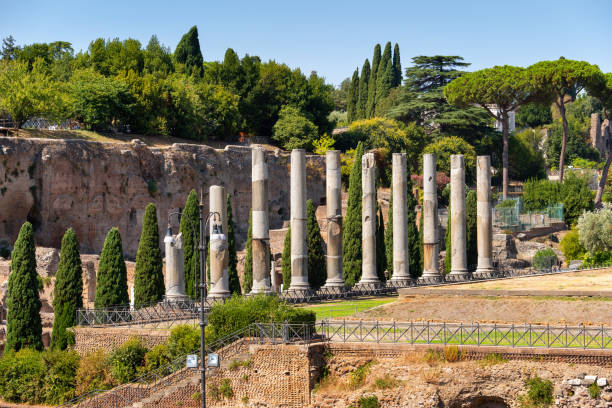
Palatine Hill in Rome, Italy 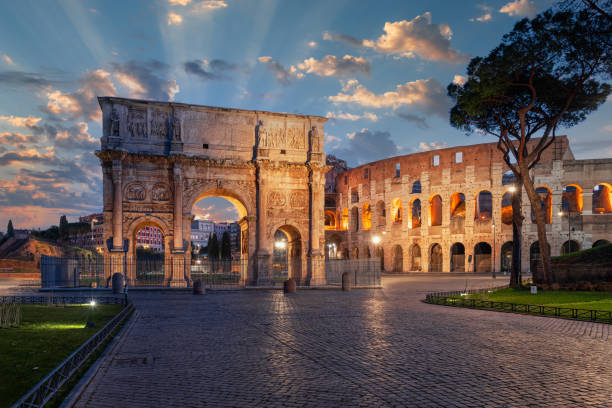
Palatine Hill in Rome, Italy -
Every cultural vulture should include a trip to the Acropolis on their vacation wish list. It looms huge in people's minds all throughout the world and may have been the most significant place in ancient Greece. The Parthenon, perched atop the Acropolis high above Athens, is clearly visible from every part of the city. The Propylaia, the Erechthion, and the Odeon of Herodes Atticus are a few further intriguing locations on the Acropolis.
Although the most renowned structures on the site were constructed during the reign of Pericles, sometimes known as the "Golden Age of Athens", in the 5th century BC, ancient Greeks had been utilizing the location since 5000 BC. Amazingly, the Parthenon was constructed in under ten years. Make sure you get a skip-the-line ticket when you go if you intend to go during the busy season, especially from June through August (though it can be crowded even in April and October). Additionally, you should spend some time in the Acropolis Museum, which is a special museum where the artifacts that have been retrieved from the Acropolis are kept. As you move throughout the structure, you'll gain fascinating historical information about the treasures that are being preserved here to prevent weather damage.
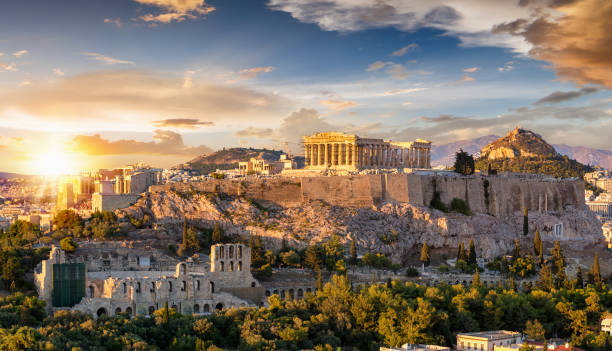
Acropolis in Athens, Greece 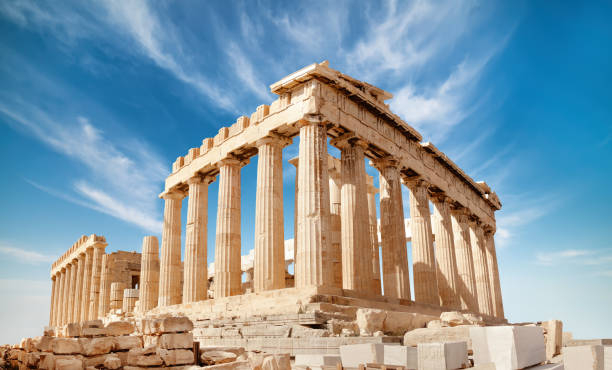
Acropolis in Athens, Greece -
Bath is home to one of Europe's most exquisite ancient ruins, despite the fact that it initially appears to be a typical English town. The city's famed Roman Baths are an amazing archaeological site worth visiting and can be reached by rail from London an hour and a half away in the west. The Roman Baths, also known as Aquae Sulis in antiquity, were built around 70 AD and are an example of how Roman and Celtic traditions coexisted. Romans used the Baths primarily as a social meeting place, but over time, they began to believe that they had curative properties.
One of the most sought-after baths outside of Italy would be the Roman Baths. Even the future Queen Anne visited Bath in the latter part of the seventeenth century in an effort to get rid of different illnesses, including gout. Today, you may have a drink of this water, which has 43 minerals in it, by going next door to the Pump Room. The Baths have been excavated to provide us with a glimpse into early Roman everyday life. They are regarded as one of the best-preserved Roman remains in the whole world. To provide tourists with a better understanding of what Roman life might have been like, a museum has been constructed around the ruins.
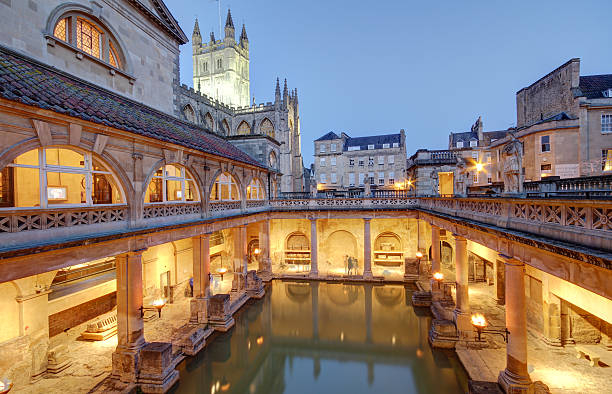
Roman Baths in Bath, England 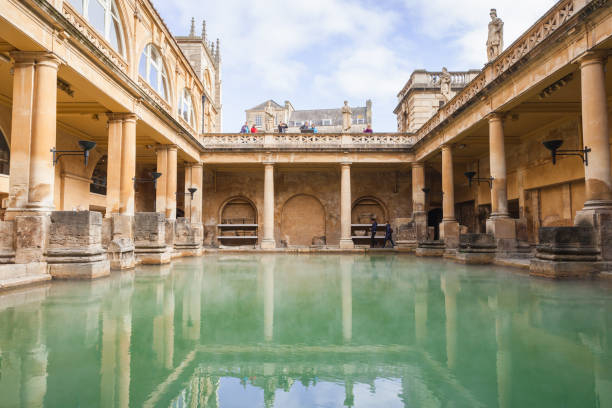
Roman Baths in Bath, England -
The Baths of Caracalla, among Rome's most intriguing remains, are also an active archaeological site. They were constructed in the third century AD, and the citizens of Rome utilized them as their main public bathing facility for more than 300 years. In their heyday, the baths could hold 1,600 bathers who had access to three main bathing chambers, outdoor swimming pools, gardens, a sizable public library, and other amenities. It was a sizable structure made of millions of bricks and at least 252 columns.
The baths were devastated by an earthquake in 847, yet they are the most notable Roman bathhouse ruins that have endured the ages. The beautiful mosaics, sculptures, and frescoes that formerly graced the bathhouse are still visible today if you visit the location. Pick up a virtual reality guide from the information center for the best experience. You can see the incredible magnitude of the baths in all their splendor thanks to this stunning virtual restoration of the location. Watching the archaeologists at work locating new artifacts at the antiquated baths is also fascinating. The closest metro station is Circo Massimo, and it's only a short distance from Circus Maximus to the Baths of Caracalla.
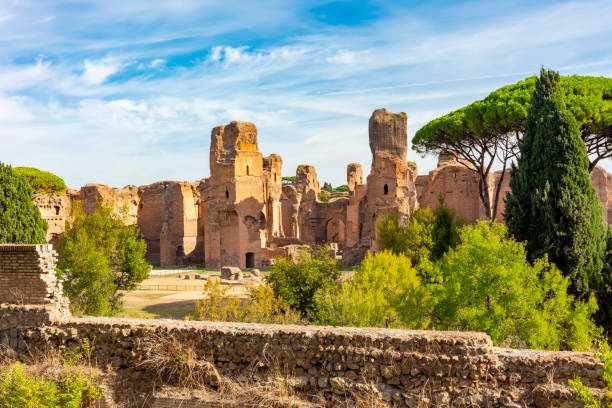
Baths of Caracalla in Rome, Italy 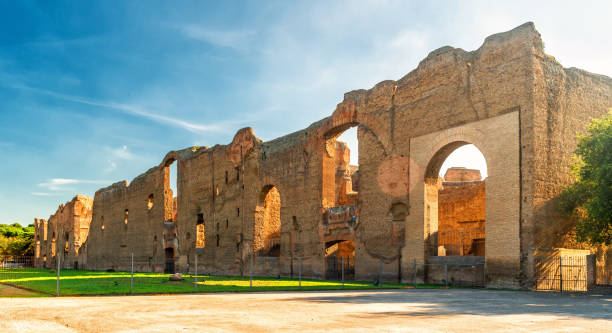
Baths of Caracalla in Rome, Italy -
Zaragoza is a city in northeastern Spain with a history that goes back more than 2,050 years to the "Caesaraugusta" period. It is simple to take a day excursion to Zaragoza by train from Barcelona or Madrid. Despite being well-known for its street art, Basilica, and the square in the old town, the city also boasts one of Europe's most impressive archaeological sites. Undoubtedly one of the biggest surprises in the city is its extensive Roman past.
There are two archaeological sites in Zaragoza that may be visited. At the Museo del Teatro Romano de Caesaraugusta are the remains of a Roman theater. The other is the Museo del Foro de Caesaraugusta, a forum museum where tourists can view the unearthed city remnants that formerly stood just beneath the center of present-day Zaragoza. There appears to be a full metropolis immediately underneath the present-day city layout.
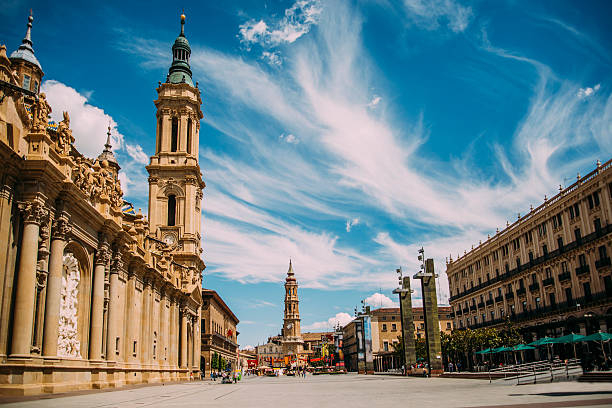
Zaragoza, Spain 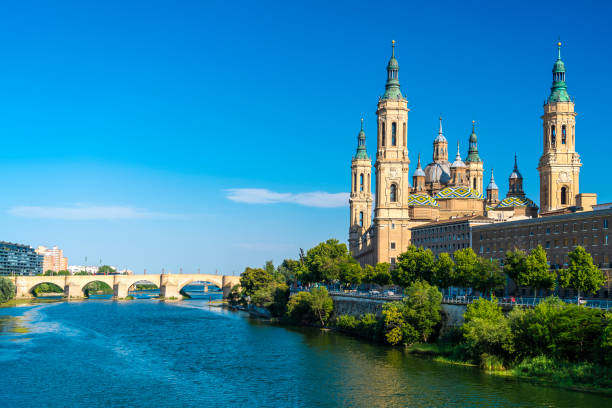
Zaragoza, Spain -
Northern England's Vindolanda was a Roman fort town located south of the eastern part of Hadrian's Wall. It served as the home for Roman troops, their families, and auxiliary services for roughly 300 years. Near the site, there are two outstanding museums dedicated to Roman artifacts. The only surviving Roman Army helmet crest is one of many fascinating discoveries in the Roman Army Museum. A 20-minute dramatization of life for Roman Empire soldiers on the northern frontier is also shown in the museum.
You may observe archaeologists working at the expansive site at the Vindolanda ruins. The location is quite deep and wide. At the present rate of excavation, it is predicted that it will take more than 100 years until the entire site is revealed. Due to the scarcity of oxygen where many of the artifacts were discovered, they were discovered in a remarkable condition of preservation. Roman shoes, armor, jewelry, and coins are among the artifacts conserved and displayed in the museum at Vindolanda. The most intriguing is conceivably the wooden writing tablets. The earliest known instance of a woman's handwriting can be found on one of the tablets, which is an invitation to a birthday party written by a Roman noblewoman to another.
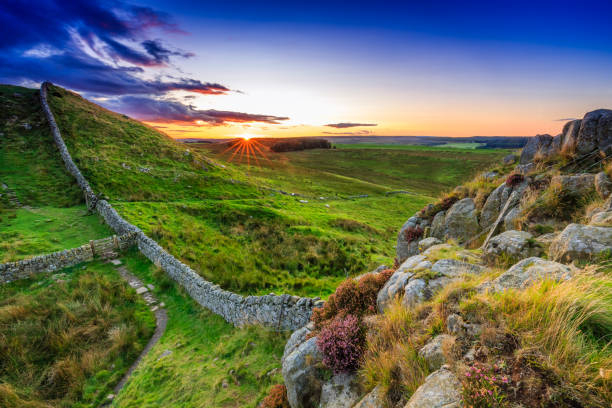
Vindolanda, England 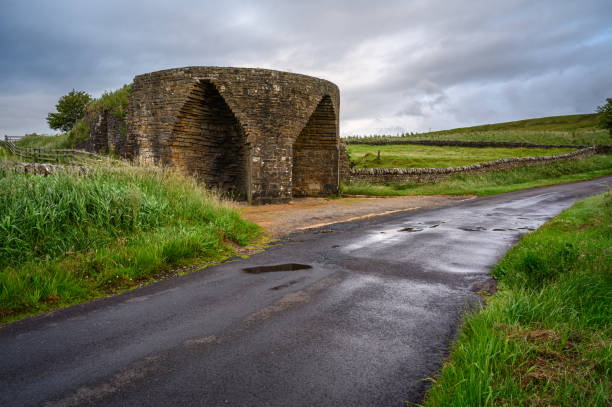
Vindolanda, England -
One of the most well-known ancient monuments in Europe, Stonehenge, a UNESCO World Heritage Site, is easily accessible as a day trip from London. The Bronze Age is said to have been the time when Stone Circle was built. Regarding the design and function of the stones, there are still a lot of unanswered issues. There is a visitor's center and museum at the Stonehenge site that is devoted to the history of the stone circle, the artifacts found there, and life in the time that Stonehenge was built.
Near the tourist center, there are additional Neolithic homes where you can see how life was more than 4,500 years ago. There is a shuttle that will transport you to Stone Circle from the tourist center. You may either take a guided tour or use public transit to get to Stonehenge. If you're coming from London to see Stonehenge, you may catch the train to Salisbury from London Waterloo Station. There is a Stonehenge Tour Bus that departs from Salisbury and will take you there for £16 for adults. This bus will also take you to various locations in and around Salisbury. It is a hop-on, hop-off style bus.
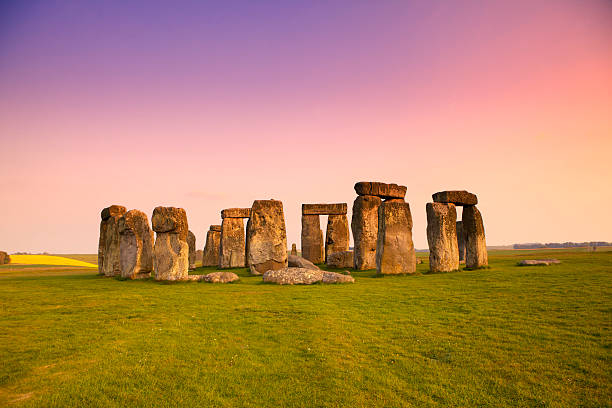
Stonehenge, England 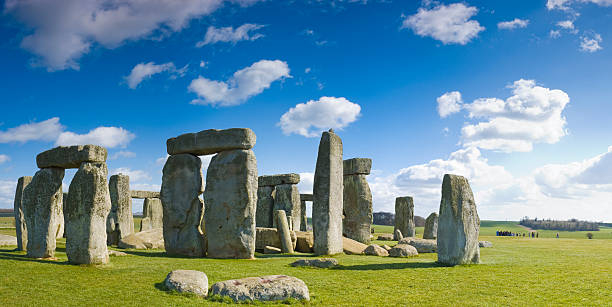
Stonehenge, England -
Glanum's ruins may be seen just outside the picturesque town of Saint-Rémy-de-Provence in Southern France. This Roman town was founded in the second century BC, but until excavations started in the early 20th century, it was mostly covered when it was abandoned in 260 AD. Some of Provence's most cherished ancient sites were uncovered by archaeologists after thousands of years of neglect. The city has the scars of several regime transitions, and the blending of various architectural forms is what gives rise to the spectacle you will see today. Both Hellenistic and Roman town ruins are easily apparent, and the result is spellbinding.
Visit the hot baths, stroll down the "main street" with its covered drains still dripping with water, look up at the twin temples, and stare into the different caverns and wells. It just takes a few hours to see the entire site, but it's a delight to see such impressive artwork and get a glimpse of this long-gone civilization. If you go in the spring, you'll be greeted with an even more vibrant view as the town is peppered with trees in bloom. Entry to Glanum is reasonably priced (€8 for adults; free for kids), so taking the family there won't break the bank. Just know that unless you walk a little distance from Saint-Rémy-de-Provence, you will have to pay for parking. A map in your language will be provided by the front desk employees so you may explore the site at your own pace; alternatively, an audio guide costs 3 euros. There is a small museum, souvenir store, and café on the property.
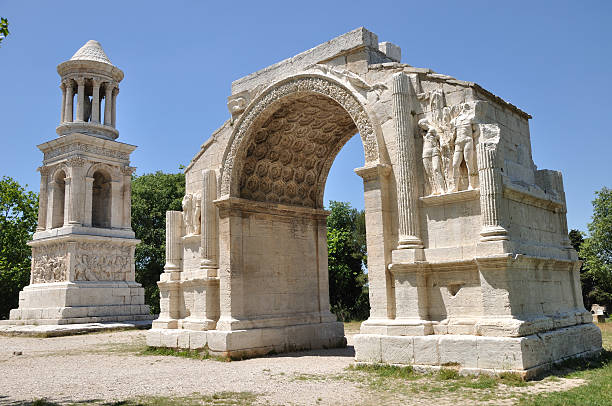
Glanum, France 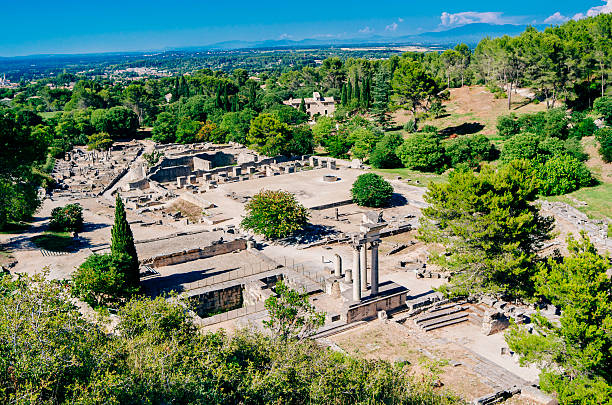
Glanum, France -
One of the most significant archaeological sites from Ancient Greek history in Italy is the Neapolis Archaeological Park near Syracuse. A well-preserved Greek amphitheater from the 5th to the 3rd century BC is housed in a sizable park in Sicily's southeast and is being used for theatrical performances today. In one of the park's numerous old quarries, called the Ear of Dionysius, visitors may imitate the echoes of convicts who were previously confined there as Emperor Dionysius' captives.
The Spanish who used the stone to build Ortigia partially demolished a less well-preserved Roman amphitheater from the second century. The enormous Hieron II sacrifice altar, which dates to the third century BC, is also noteworthy. The park is without a doubt one of Syracuse's best attractions. It may be accessed from Ortigia, the city's historic core, via public transportation or by automobile, and there is nearby parking. It is located two kilometers northwest of Ortigia. The archaeological park is open every day, however the neighboring (10-minute walk) Museo Paolo Orsi, which houses many park artifacts, is closed on Mondays.
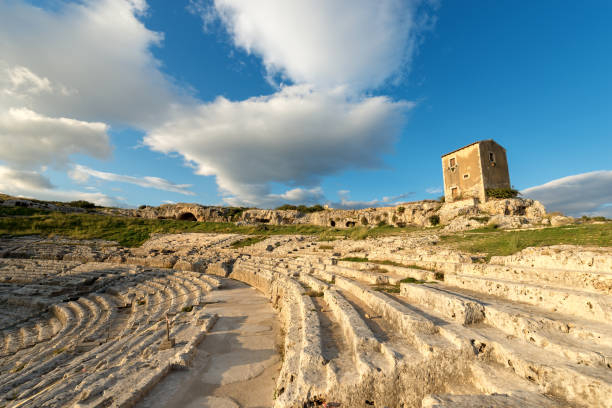
The Neapolis Archaeological Park of Syracuse, Italy 
The Neapolis Archaeological Park of Syracuse, Italy -
Brú na Bóinne is a collection of ancient passage tombs and monuments in eastern Ireland that exhibit the inventiveness in architecture, creative endeavors, and holy rituals of the people who inhabited the area around the River Boyne in prehistoric times. The extensive megalithic art complex, several ceremonial sites, and some sizable grassy mounds that conceal tombs older than the Egyptian pyramids are also part of the complex. Newgrange, Knowth, and Dowth are the three largest passage graves, but only Newgrange and Knowth can be visited with a tour.
You can view engraved kerbstones and look down long passageways leading into the tombs while taking a tour of the passage graves. Visitors at Newgrange even get the opportunity to explore the tomb's interior and learn about its astrological alignment. The location also contains a tourist center with educational displays, such as a scale model of Newgrange's interior and a Neolithic home. Bru na Bóinne is conveniently accessible as a day trip from Dublin as it is situated in County Meath, about 40 kilometers to the north of the city. The towns of Drogheda and Donore are the closest localities.
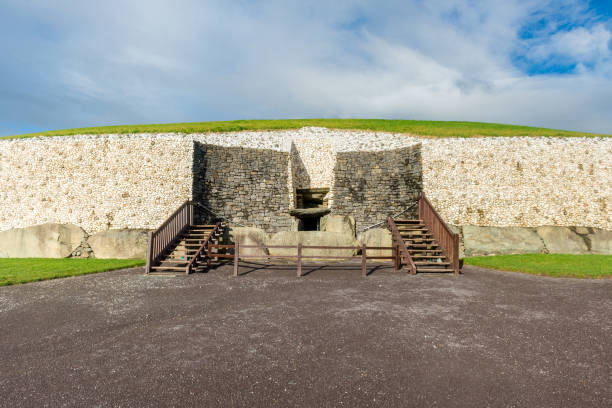
Brú na Bóinne, Ireland 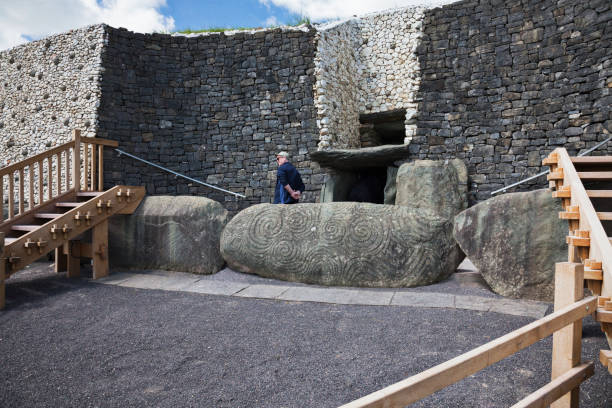
Brú na Bóinne, Ireland -
On the Greek island of Crete, 5 kilometers from Heraklion, stands Knossos, one of the earliest towns in Europe. The earliest residents there resided there as early as the Neolithic era, and it served as the hub of Minoan civilization. It could hold about 100,000 guests at its most crowded. Abandoned somewhere between 1,380 to 1,100 BC. The Minotaur is a key element in one of the most well-known local tales. He was portrayed as a creature that lived in a labyrinth and was half bull and half man. A young Greek prince had to battle the Minotaur when he arrived in Crete. Before the prince entered the labyrinth, the daughter of the local monarch Minos fell in love with him and gave him a ball of yarn.
So that after killing the Minotaur, the prince might exit the maze. The image of a bull in Knossos and the maze of stone walls there bear striking resemblance to this myth. The Palace of Knossos is open to tourists right now. In 1878, the first excavation of the site was begun, and since then, restoration efforts have proceeded. Visitors may take in the spectacular multi-story structure remains that show the once-grand palace. There are huge columns, stairways, and a confusing network of walls. At the information center, visitors can choose between a self-guided tour and a group tour with a guide. Several further adjacent ancient sites can be visited as part of a day-long road trip in Crete.
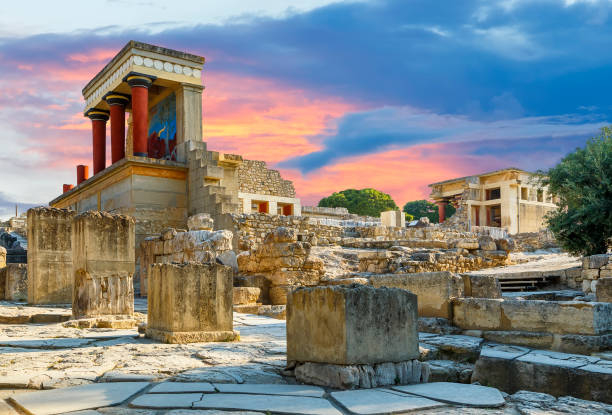
Minoan Palace of Knossos, Greece 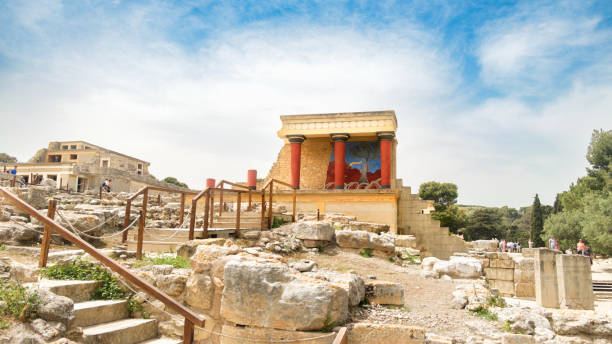
Minoan Palace of Knossos, Greece -
One of Europe's top archaeological sites may be found not far from Naples, beneath Vesuvius. The same volcanic explosion that buried Pompeii also devastated the Roman town of Herculaneum, although in a different fashion. While Herculaneum was struck by a 100 mph storm of superheated ash and deadly gas, Pompeii was buried in rocks that destroyed the town's roofs and nearly everything above the ground floor. This means that Herculaneum is far better preserved than Pompeii, which is good news for tourists. The upper floors of many houses are still present, and even wooden balconies and shop fixtures have persisted.
Even better, even though Herculaneum's excavations are far smaller than Pompeii's since so much of the old city is buried beneath contemporary Ercolano, Herculaneum only receives 10% as many visitors as Pompeii, making it feasible to come and almost have the evocative streets to yourself. You may rent audio tours, and Herculaneum has a modest museum. To learn as much as you can about the website before visiting, though, is a smart idea. It is also simple to combine a trip to Herculaneum with a journey up Mount Vesuvius. A wonderful day for touring one of the most important ancient sites in Europe would include seeing the still-smoking crater and then going to Herculaneum.
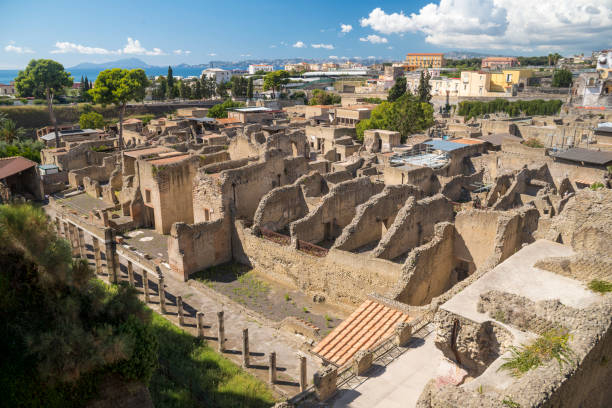
Herculaneum, Italy 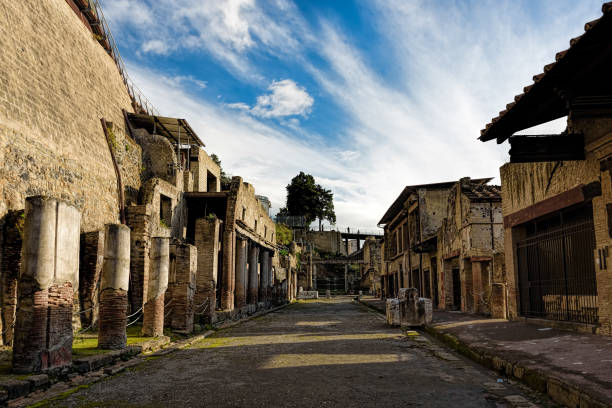
Herculaneum, Italy -
Pompeii is arguably the most horrifyingly intriguing of all the archaeological sites in Italy. Pompeii, which lies 242 kilometers south of Rome, originally had 20,000 citizens and was a prosperous ancient city. It is now a well-preserved ghost town that provides visitors and archaeologists with a window into life tens of thousands of years ago. At the base of Mount Vesuvius, a still-erupting volcano, stands Pompeii. Pompeii was buried under nearly 12 meters of ash and lava when it erupted in 79 AD. While this was unfortunate for the locals at the time, the result was that Pompeii was stuck in the past until it was rediscovered in 1748.
Today, tourists may meander through its sinister cobblestone lanes and discover old residences and shops. Along with the oldest surviving Roman amphitheater in the world, there are two primary theaters that you may see. Even some of the well-known human plaster casts from Pompeii can be marveled at by visitors. From Rome's Termini Station, the most straightforward route to Pompeii is via rail. Take the fast train to Naples, then the Circumvesuviana train to the Pompeii Scavi station from Naples.
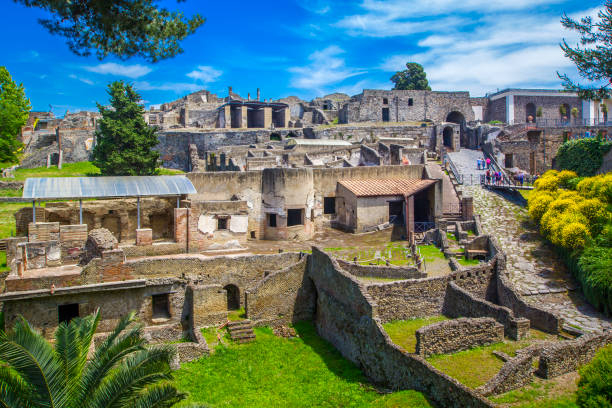
Pompeii, Italy 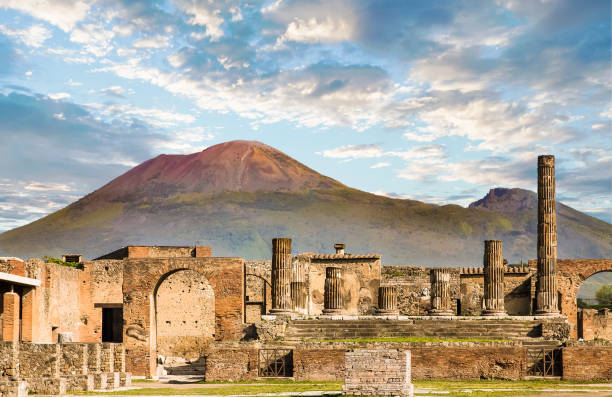
Pompeii, Italy -
One of the most interesting archaeological sites in all of Europe is Cenobio de Valerón, which is located on the Spanish island of Gran Canaria. The island is situated on Africa's northwest coast. The island is even more alluring as a location for exploring historical monuments since it has so much to offer in terms of history, ecology, and weather. A complex network of ancient caves is known as the Cenobio de Valerón, also referred to as the Caves of Valeron or the Monastery of Valeron. The caves are situated directly on the cliff in the Municipality of Santa Maria de Guia in the northern part of the island.
It is, in essence, the greatest collective pre-Hispanic granary (with 298 compartments and 350 storage places). Actually, it was constructed before the Roman era. But until the island was taken in the late 15th century, the locals of the islands continued to use the caves. These caverns' enormous size only serves to highlight the historical significance of the island's agriculture.
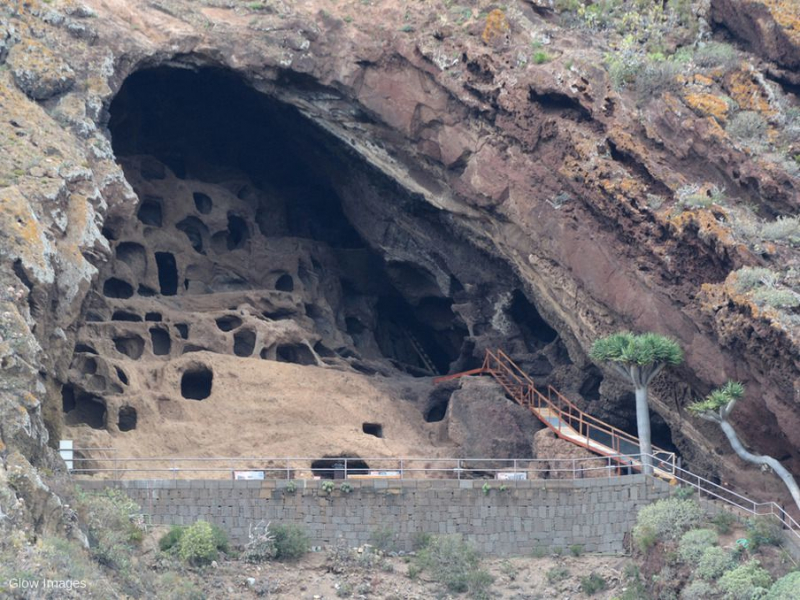
Cenobio de Valerón on Gran Canaria, Spain 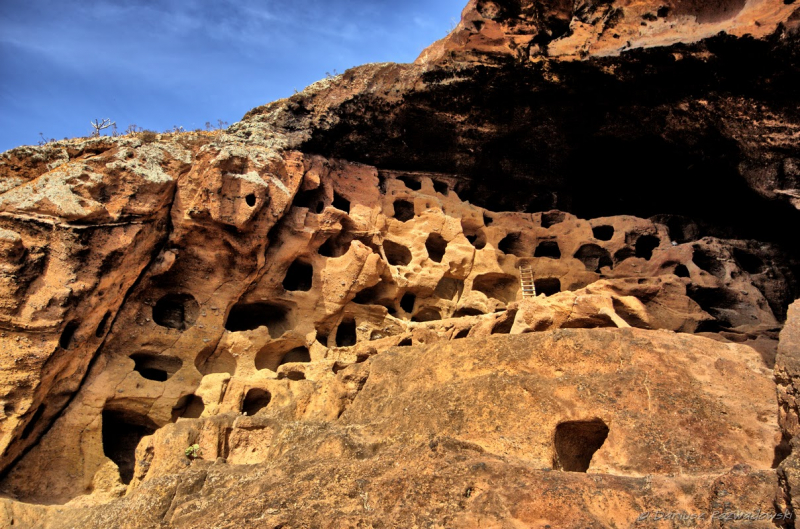
Cenobio de Valerón on Gran Canaria, Spain

















